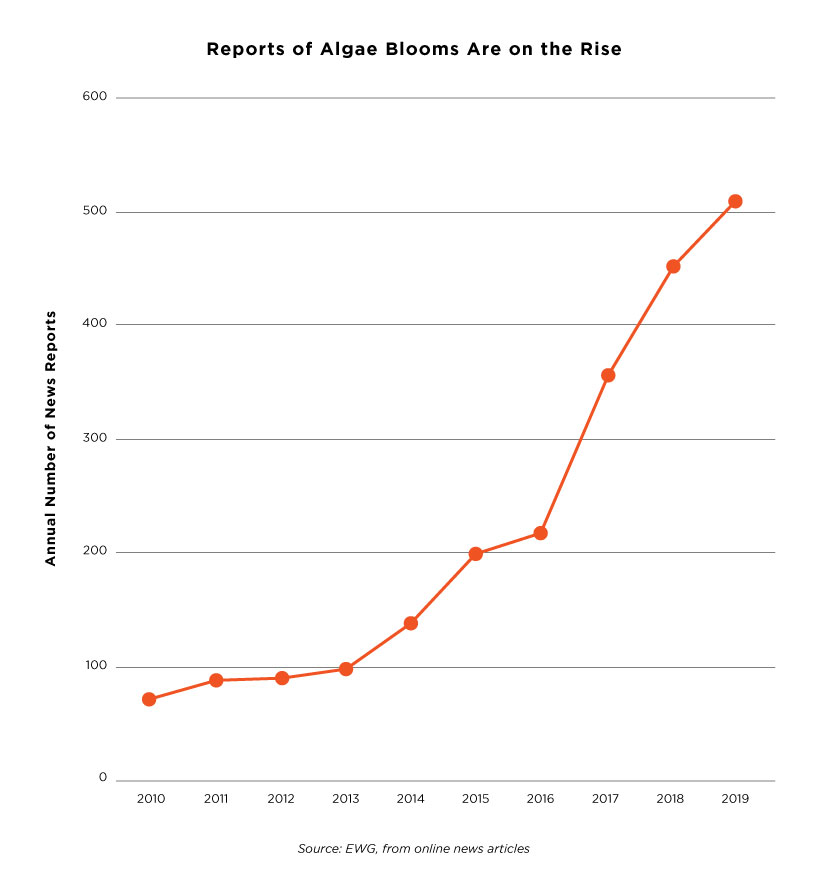
EWG has found 508 news reports about algae blooms in the country’s lakes, ponds and rivers so far this year – 18 percent more than the 429 we found in the same period last year.
Because no federal agency tracks algae outbreaks, EWG uses news reports as a proxy to track the spread of the problem.
Outbreaks of blue-green algae – actually microscopic organisms called cyanobacteria – are triggered by nitrogen and phosphorus from fertilizer and animal manure that run off farm fields and get into bodies of water.
The problem seems to be getting worse. Polluted farm runoff continues largely unabated, and the climate crisis is producing warmer weather and water temperatures, along with more rainfall – all conditions that feed algal blooms.
Algal blooms are not only smelly and gross. Some cyanobacteria turn toxic, threatening the health of people and animals getting into the water or drinking it.
News reports of blooms have increased every year since 2010, when there were a total of 71 stories about outbreaks. In 2018 we counted 452 articles about algae outbreaks.
Blooms are still breaking out in many states, from California to Massachusetts. But October is usually when outbreaks start winding down. It’s unclear if that will be true this year – the hottest year on record and in many parts of the country, a very wet one.

At least 17 blooms have polluted drinking water this year. Thirteen blooms have killed dogs, and six blooms have killed large numbers of fish. Many other algae outbreaks have damaged recreation opportunities and local economies.
To prevent another record-breaking bloom season next year, lawmakers must act to reduce runoff of farm chemicals into water. To reduce the chemicals that fuel algae blooms, farmers should be required to meet basic standards for following proven conservation practices.



